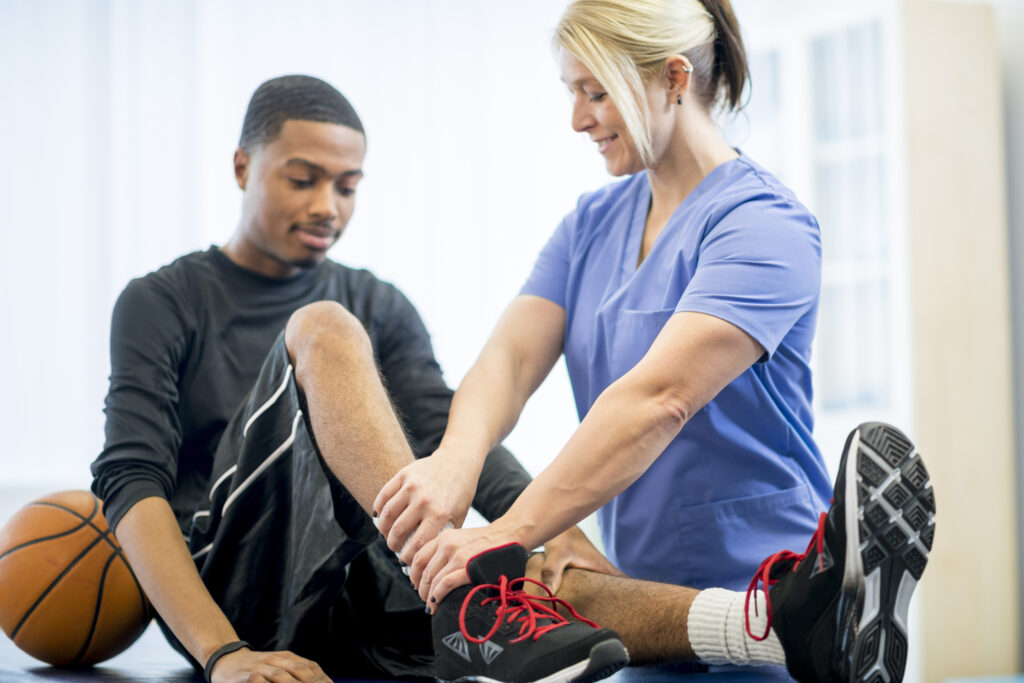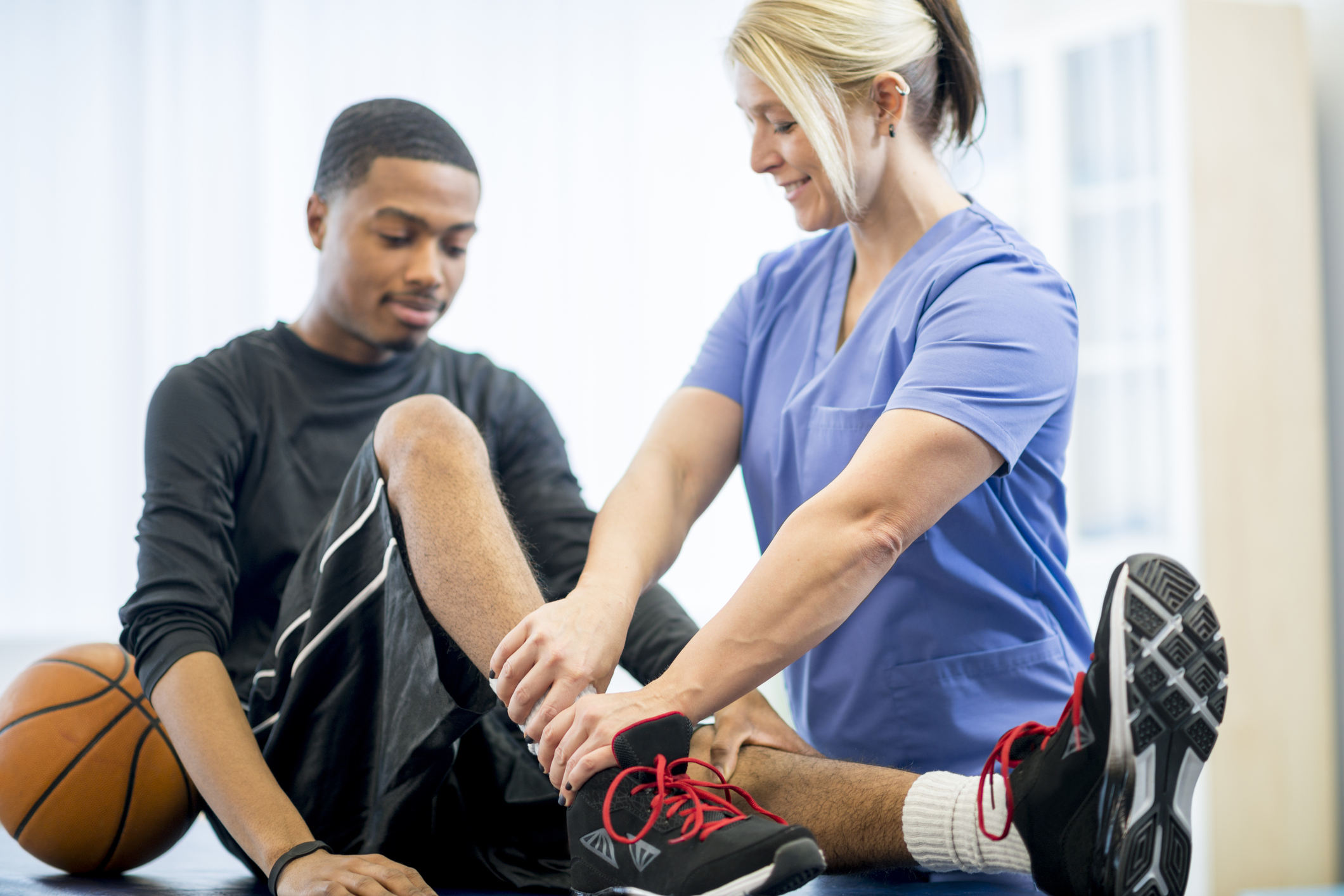
Organized athletic competition is a cherished pastime in America. Millions of people participate with much more serving as spectators. Participation at all levels requires a sports physical exam.
Whether you are getting your first examination or just curious about the process, what happens at a sports physical can vary at different levels.
These examinations slightly differ from a regular doctor’s physical. Knowing what to expect can prepare you or a family member for their first sports physical.
Why Are Sports Physicals Needed?
You may be wondering why a separate type of physical is needed for athletic participation. A sports physical is used to screen a person to ensure they can safely participate in competition and practice.
A doctor is specifically looking for possible medical issues that could be aggravated by physical motion. Discovering issues like asthma or high blood pressure won’t disqualify a participant, but they may have restrictions or special needs.
Sports physicals are also used to keep other athletes safe. Contagious diseases or mental instability could prove dangerous to others during a game.
The responsibility and priority of a sports physical is safety.
What Happens at a Sports Physical?
The actual doctor’s visit is a combination of two different types of examination – historical and physical. Each examination will help a doctor make confident decisions.
Historical Examination
The historical portion of your sports physical will reveal any past issues that could possibly hinder physical participation. These issues can include the following:
- Genetic problems
- Dental and eye accessories
- Chemical dependency
- Allergies
- Past surgeries or injuries
- Previous problems with rapid weight gain or loss
Having one or more conditions related to these topics won’t bar someone from playing. An athlete may be given medication, restrictions, or further tests.
More severe findings like drug addiction or an eating disorder could cause a doctor to refer you to a specialist for clearance.
Physical Examination
The physical part of your visit will help a doctor evaluate your fitness. She or he will run preliminary tests that may flag bigger problems. These are the vital components of a physical test:
- Height
- Weight
- Blood pressure
- Heartbeat
- Genitals
- Lungs
- Vision
All of your measurements must meet a minimum standard deemed safe by the doctor.
They will look for things like irregular heartbeats, extremely high or low blood pressure, and hernias. These conditions could lead to permanent injury or even death if unchecked.
The goal for an athlete is to get a clean bill of health and cleared for sports participation.
Different Types of Sports Physicals
The sports physical that a 10-year-old needs will not be the same one a professional athlete gets. Due to their size, strength, and training regimens a professional athlete needs a more thorough examination.
Since a professional depends on their body to make a living, sports physicals are usually the first step to signing contracts or being traded.
If a child fails a sports physical, a doctor may recommend some remedies for the situation. If a professional athlete fails a physical, their contract or trade may be voided.
College athletes usually have a trainer on staff at their school that can do the sports physicals. But most children can get convenient sports physicals at a local urgent care.
After a Sports Physical
Depending on the results of your sports physical, there are a few options you have. With a clean bill of health, you’ll be cleared to go and can start practicing or exercising in preparation for your sport.
A doctor may have strong recommendations for you like an ankle brace or over-the-counter medicine. These recommendations don’t need to be followed to play, but they are probably good suggestions to keep.
If you referred to a specialist regarding something a sports physical found, then the specialist may be the one to clear you.
Being clear on a conditional base means you are allowed to start practicing and playing, but you will need to follow-up with the doctor to make sure things are okay.
When you resume activities, any abnormal pain or discomfort should be reported to a trainer or medical professional. If normal bodily functions stop working correctly, then this is a red flag for a bigger issue.
How Long is a Sports Physical Valid?
You might be wondering how long a sports physical is valid. Most physicals are valid for a calendar year, but some activities will require a physical every season.
For example, getting a sports physical before the soccer season will normally allow you to play most sports until the following year. It’s possible that a hockey league in the winter will require another sports physical to allow participation.
Most leagues put a deadline on when an athlete needs to get a physical. Make sure to get a physical as early as possible. Every family in the area will be rushing to get a sport physical and spots will fill up fast.
Can a Sports Physical Replace a Regular Annual Physical?
Unfortunately, a sports physical shouldn’t replace your annual check-up. It seems redundant, but your annual physical should not be skipped.
While a sports physical is very thorough, it’s only for athletic purposes. Your regular annual check-up will look at your health in a holistic approach. Doctors will look for irregularities that a sports physical doesn’t target.
Save yourself the extra trip by scheduling both physicals at the same time.
Getting Back on the Court
Knowing what happens at a sports physical helps calm the anxiety of the unknown. Your goal is to get back on the court or field to start training with your coach or team.
Following the orders and recommendations given during a sports physical will have you on your way to competing again. Prepare for your next sports physical by living a healthy life.
If you’re interested in more health-related articles, please keep scrolling our site.
